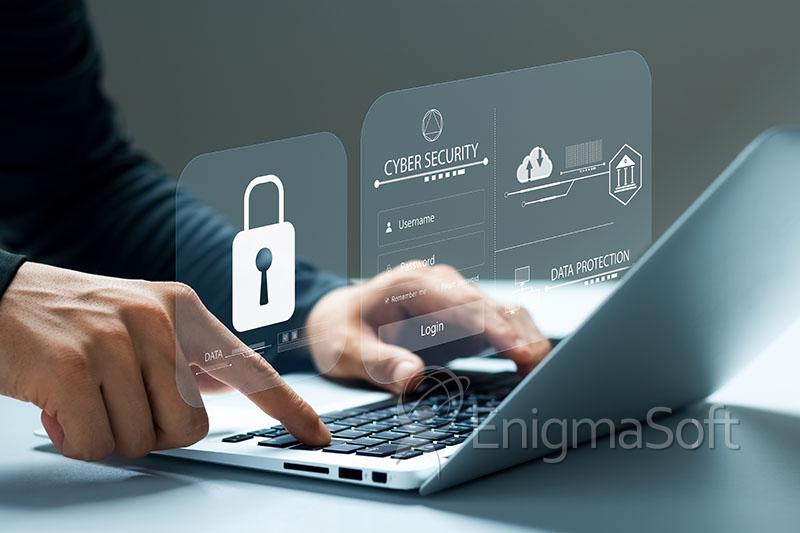Cybersecurity in 2024: What You Can Do to Secure Your Personal and Business Networks

In the dynamic landscape of 2024, cybersecurity is no longer a concern limited to IT professionals. With the proliferation of smart devices and the Internet of Things (IoT), the need for robust cybersecurity measures is more critical than ever.
There are new threats popping up daily which makes it difficult to stay a step ahead of digital landmines, but just how is a higher level of security achieved? This article aims to provide a comprehensive overview of the current cybersecurity landscape and practical steps for securing both personal and business networks.
Table of Contents
Understanding the Cybersecurity Landscape in 2024
The cyber world of 2024 is a complex web of interconnected devices, cloud services, and AI-driven applications. The rise of 5G networks has enabled faster internet speeds, leading to more devices and services being connected. However, this also means a larger attack surface for cybercriminals. The most common threats include phishing attacks, ransomware, data breaches, and IoT vulnerabilities.
The Shift in Cyber Threats
Cyber threats have evolved from simple malware attacks to sophisticated, AI-powered cyber-attacks. Hackers use advanced techniques like deep learning to bypass traditional security measures. Additionally, the increase in remote work has exposed new vulnerabilities in home networks, which are often less secure than corporate networks.
Securing Your Personal Network
1. Update Your Devices Regularly
Ensure that all your devices, including smartphones, laptops, and IoT devices, are running the latest software versions. Manufacturers often release updates to patch security vulnerabilities.
2. Use Strong, Unique Passwords
Avoid using the same password across multiple platforms. Utilize a password manager to generate and store strong, unique passwords for each account.
3. Enable Two-Factor Authentication (2FA)
Two-factor authentication adds an extra layer of security beyond just a password. This could involve a text message, a phone call, or an authenticator app.
4. Be Wary of Phishing Attempts
Phishing scams have become more sophisticated. Be cautious about clicking on links or downloading attachments from unknown sources. Verify the authenticity of emails, especially those requesting personal information.
5. Secure Your Home Wi-Fi
Change the default username and password of your Wi-Fi router. Enable WPA3 encryption and consider using a Virtual Private Network (VPN) for an added layer of security.
Securing Your Business Network
1. Implement a Robust Security Framework
Adopt a security framework like ISO 27001 or the NIST Cybersecurity Framework. These frameworks provide a structured approach to managing and mitigating cyber risks.
2. Conduct Regular Risk Assessments
Regularly assess your network for vulnerabilities. This includes penetration testing and scanning for weaknesses in your network’s defenses.
3. Employee Training and Awareness
Employees are often the weakest link in cybersecurity. Conduct regular training sessions to keep them informed about the latest cyber threats and best practices.
4. Data Encryption
Encrypt sensitive data both in transit and at rest. This ensures that even if data is intercepted or accessed by unauthorized individuals, it remains unreadable.
5. Backup and Disaster Recovery
Regularly back up critical data and implement a disaster recovery plan. In the event of a data breach or ransomware attack, having a backup can be the difference between a minor setback and a catastrophic loss.
6. Invest in AI and Machine Learning Solutions
Utilize AI and machine learning tools to monitor network activity and detect anomalies. These technologies can identify potential threats faster and more accurately than traditional methods.
7. Partner with a Cybersecurity Firm
For businesses, especially small to medium-sized enterprises, it may be beneficial to partner with a cybersecurity firm. They can provide expertise and resources that may not be available in-house.
8. Regulatory Compliance
Stay informed about the latest cybersecurity regulations in your industry. Non-compliance can lead to hefty fines and damage to your brand’s reputation.
The Role of AI in Cybersecurity
AI plays a dual role in cybersecurity. On one hand, it empowers cybercriminals with sophisticated tools. On the other hand, it equips cybersecurity professionals with advanced defenses. AI can analyze vast amounts of data to identify patterns and anomalies indicative of cyber threats.
Conclusion
In conclusion, the importance of cybersecurity in 2024 cannot be overstated. As technology continues to advance, so do the tactics of cybercriminals. By staying informed and implementing the measures outlined in this article, individuals and businesses can significantly reduce their risk of cyber threats. The key to cybersecurity is vigilance and continuous improvement in response to an ever-evolving digital landscape.